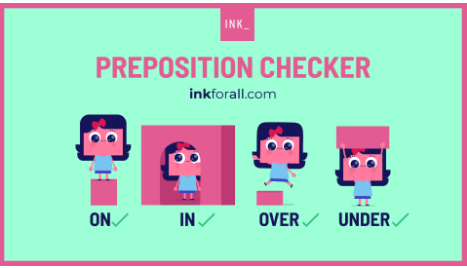A preposition is a word that typically shows the relationship of a noun or pronoun to some other word in the sentence. Prepositions are important because they help clarify the meaning of a sentence.
Some examples of prepositions include: about, above, across, after, against, among, around, at, before, behind, between, by, for, from, in, into, like, near, of, off,. On. Onto. Over. Past. Through. To, Under. Until. With.
A preposition is a word that typically indicates the relationship of one noun or pronoun to another. In English, there are about 165 prepositions, but the meaning of each one can be slippery.
The following are some of the more commonly used prepositions in the English language: about, above, after, against, among, around, at, before, behind, below, beneath, between, beyond, and by.
Examples of preposition
Prepositions are some of the most commonly used words in any language. They’re also one of the most difficult to learn and use correctly. There are dozens of prepositions in English, which can be confusing for English learners.
But don’t worry. Here are some examples that will help you understand how prepositions work.
I am sitting in a chair.
She is walking on the beach.
He is standing under the tree.
What is a preposition checker?
A preposition checker is a tool that helps writers ensure that they are using the correct prepositions in their writing. A preposition defines the relationship between two nouns or pronouns, and improper usage can change the meaning of a sentence.
A preposition checker scans text for errors and highlights them, providing users with tips for correcting them. Preposition checkers are available as online tools or add-ons to word processing software.
A preposition checker is a computer program that determines the part of speech of a given word, in this case, prepositions. Prepositions are words that typically indicate the relationship between two nouns or pronouns (e.g., “He is on the bus,” or “The cat sat next to me”).
There are many different prepositions in the English language, which can be difficult for non-native speakers to learn and use correctly. A preposition checker can help to identify incorrectly.
Benefits of preposition checker
The INK preposition checker is a handy tool for writers of all levels. By running your text through a preposition checker, you can easily identify any errors and make the necessary corrections. This will help to ensure that your writing is error-free and easy to read.
Additionally, INK preposition checkers are beneficial because they help improve your grammar skills. By learning how to use prepositions correctly, you will be able to write with greater fluency and accuracy.
Rules for Using Prepositions in English Grammar
There are a few basic rules for using prepositions in English grammar. One is that a preposition is always followed by a noun or pronoun, never by a verb. For example, you would say, “She’s on the phone,” not “She’s talking on the phone.”
Additionally, prepositions usually indicate location or time, as in “She’s inside the house” and “It happened in the morning.” There are, of course, exceptions to these rules, but knowing them will give you a good.
It can be easy to forget the rules for using prepositions in English grammar, but with a little practice and some helpful reminders, you’ll be able to use them correctly every time. Here are four simple tips:
1. Prepositions should always be used in pairs. Some common teams include: about/on, across/with, after/before, and during/while.
2. They indicate location or direction. For example, The cat is under the table. The arrow is pointing north
Conclusion
Prepositions can be tricky in English grammar. This article provides a guide to understanding prepositions and a preposition checker to help you master this tricky part of the language.
Prepositions are tricky words in English grammar. This article explained the basics of prepositions, including their uses and functions. Use our preposition checker to make sure you are using prepositions correctly in your writing.


